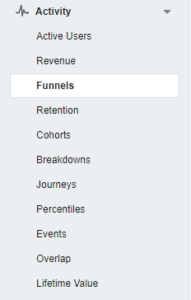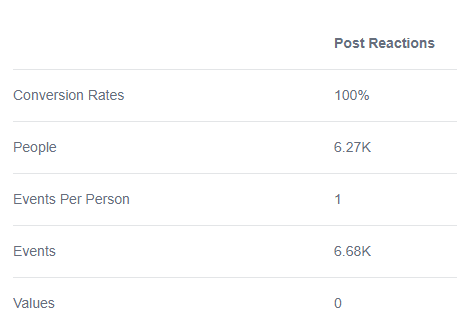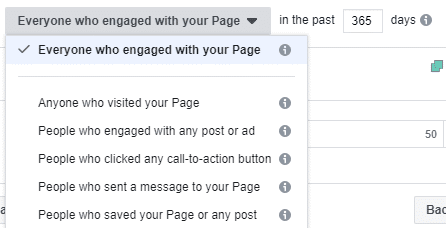“Social proof doesn’t mean anything.”
“I don’t care how many people like my ads, we need to sell stuff.”
This kind of myopic viewpoint regularly guts paid social campaigns that would otherwise become hugely successful.
I know what you’re thinking (and on the surface, seems accurate): “My goal isn’t social interaction, I need sales.”
Why assume one has nothing to do with the other?
Capitalizing on Consumer Sentiment
Historically, the siloed view of “this ad set generated x conversions/CPA/ROAS” was really all we had, unless you did some serious number crunching to extract deeper correlation.
Facebook Analytics now laughs in the face of such single-lane swimming. The days of reporting on “x likes” and “x sales” are passing as Facebook continues to roll out new tools and features that marketers can (and should) pay attention to. It’s separating one-trick ponies from actual Swiss Army knife marketers, and those who see the whole journey vs. the step right before the destination is reached.
A client that gets a lot of social interaction begs the question: Is it of ANY value?
Uncovering actual value is where the potential of Facebook Analytics resides.
Analytics has this wonderful feature called “Funnels,” which allows marketers to see conversion funneled behavior journeys. If you’re a brand that sparks a lot of sentiment (good or bad), this feature yields a fascinating subset of data.
You find it on the left margin within Analytics:
Next, click the drop down for “Add Funnel Step” to start adding the steps in the funnel you want to evaluate. Be sure to add them in the order you want to evaluate.
Do Emotions = Events?
For one particular client, we wanted to analyze if emotional engagement has any weight. Facebook makes this somewhat easy to do with video, because you can segment by engagement (how long someone watched), and if those users convert at some future date. Unfortunately, you’re limited on what you can see natively in Ads Manager.
Most marketers strive to evoke emotion via provocative messaging. With Facebook Analytics, we can start to analyze success in driving emotion as a user cohort.
One option in creating a Funnel is “Reactions” (in other words, users who hit an emotion reaction to your post), which can be refined even further into the TYPE of reaction. Woo hoo!
Once you refine the audience that way, you will see their size:
Now add the subsequent steps in the user journey to see what this specific audience did, and in what time frame. In this case, we want to see who searched and then booked travel:
We now know users with positive sentiment convert to booking travel at ~3.3%.
The best part? They convert at a higher rate and faster than the average user.
Yay! So what?
Let’s make a list of them. Lookalike those bad boys! Go go g–
Er…oh, wait.
Facebook, alas, does not allow us to create custom audiences based on these users, forcing many marketers to stop there and declare this data worthless. It would seem, on the surface, Facebook works against itself here, a la Genie in Aladdin: “PHENOMENAL COSMIC POWAAHHHS!….itty bitty living space.”
In other words, you have this amazing data that’s locked in a box.
With creativity, however, you can utilize all of this newfound insight. Stop moping. Start innovating.
Though previously used as a desperate flail to get content shown to users who liked pages, Engagement campaigns can be a great top-of-funnel tactic when done right. The big mistake many people make is running Engagement and just waiting for things to happen. If you know that positive-sentiment users are desirable buyers, then you need more of those users, right?
(Side note: this same method also works if you want to specifically target “haha” emotions, angry ones, etc…yes, we have seen angry-emoji-givers be good converters!)
Fill The Funnel Freaky-Fast
Capable marketers are the ones who know what goes in is what comes out. If you aren’t focusing on getting stuff in, sales will drop. Finding insights like these are your bread crumb trail to what you need to do on Facebook.
Added bonus? It’s a cheap funnel-filler.
The easy answer is to run an Engagement campaign and create a remarketing audience based off users who have engaged:
There are flaws in this system you have to account for: Half the problem is Facebook, and the other half is the marketer.
Edict #1: Remember it’s All or Nothing
You cannot specify WHICH post or ad the user interacted with. This presents unique challenges for many advertisers, particularly if they carry a lot of different product categories.
A super-sneaky way to get around that, if you have the time, budget, inclination and a whip-smart content strategy, is to create a passion page around the different areas your company sells for, or your products address. Think of a site focused on hunting. Beyond having a company page, smart brands also have an enthusiast page for duck hunters vs. bow hunting or other affinity-based pages to engage audiences at a deeply personal, emotional level.
There will be some crossover in the target groups, but it helps you better categorize the content audiences react to!
Edict #2: You Want RELEVANT Reactions
Too many businesses post funny memes that have nothing to do with their business, then wonder why the process went off the rails.
We recently audited a client who had done a ton of engagement, but was frustrated it went nowhere. Digging into the content, we found a mix of product news, corporate and PR messaging, and then funny political posts. In other words, it was attracting reactions from all over the place, and only a fraction of them would be things that would filter for desirable customer personas.
Curate your content carefully to avoid missteps. When remarketing to users who engaged with content – and you know specifically ones who like or love your posts – you have the opportunity to speak directly to them. Help them self-select as someone likely to be interested in the product you offer, versus a user who thinks a pointless cat video is absolutely hysterical.
Adapt & Move Forward
Let everyone else whine about Facebook Ads sucking and their conversion campaigns not working. Be the innovator taking the Mario Andretti spot in the driver’s seat. Peel out of the starting line whose location keeps changing (thanks, FB!) and use some of the other data in Facebook Analytics to get that funnel filled with the right people.
Obsess a lot less over conversion campaigns that refuse to work, and kick your feet up as you 4x the amount of remarketing audiences you made on the cheap.














